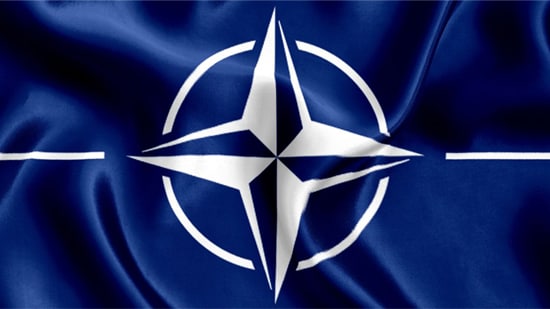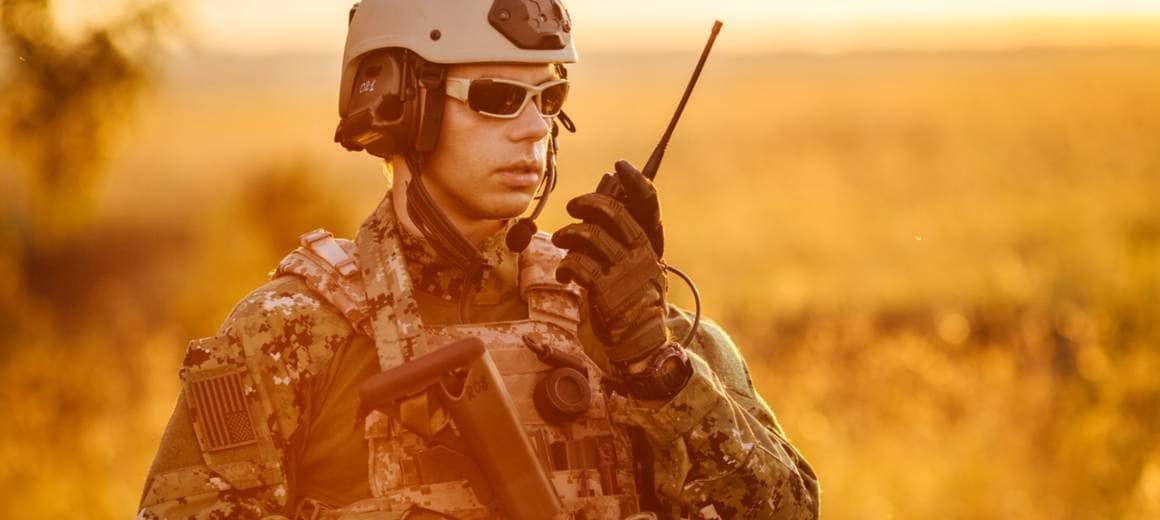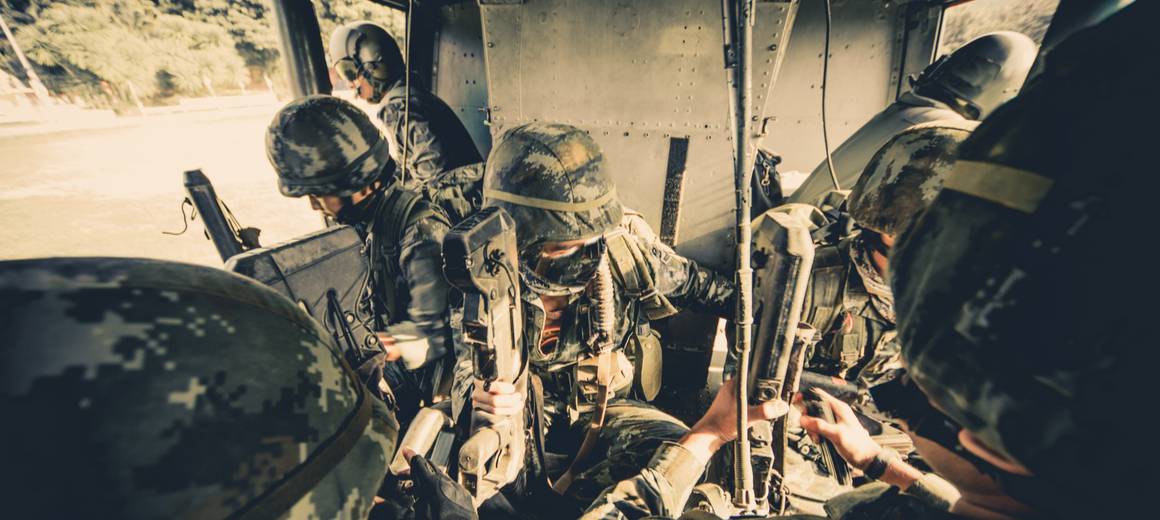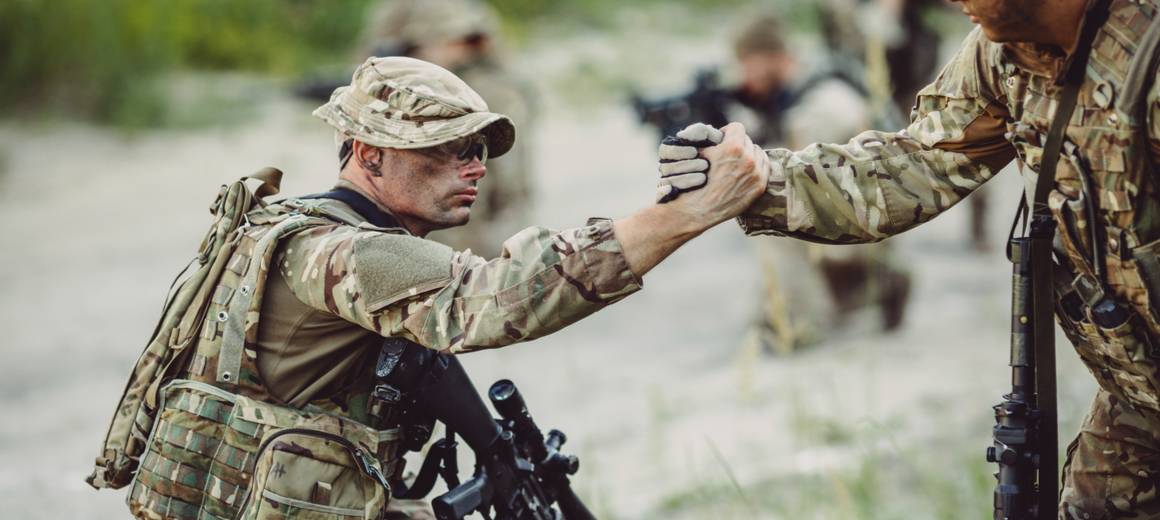A Look at the History of the NATO Phonetic Alphabet
Being able to make yourself understood when communicating orally is vitally important in potentially life-threatening situations, for example, giving a search-and-rescue helicopter the position of a downed pilot. The NATO Phonetic Alphabet is a set of words that stand for alphabetical letters to avoid misunderstandings that can result from difficult-to-spell words, different pronunciations or poor line communication.
The NATO phonetic alphabet is the most widely recognised international system used by the military to avoid miscommunicating similar-sounding letters, helping to save lives and achieve greater operational efficiency. It’s also used by emergency services, and in commercial air travel and the private jet charter industry to maintain clear communication in civilian life.
If you mix up the words of your favorite songs, you’re not alone. There’s a word for this grammatical phenomenon – oronyms. This happens when we fail to hear words or phrases clearly and our brain jumps in to help us by putting together words or phrases from our vocabulary that sound most like those not-so-clear words or phrases.
The part of your brain that’s to blame is the angular gyrus, which uses all your gathered knowledge to fill in unclear, nonsensical phrases with predictable words. Based on your personal, everyday experiences, your brain is more likely to pick a phrase that has practical relevance for you, so you’ll hear “there’s a bathroom on your right”, instead of “there’s a bad moon on the rise”.
A simple case of misheard lyrics can be funny, but what about a pilot mishearing the map grid of a rescue extraction point? Just one wrong letter or number can cost lives. This is why the NATO phonetic alphabet was created initially as a military alphabet, although it is now also used in many areas of civilian life.
The war against the angular gyrus begins
The NATO alphabet, despite its name, is not a phonetic alphabet which uses symbols or codes to represent a speech sound or letter. It is a spelling alphabet (also called a telephone alphabet, radio alphabet or voice-procedure alphabet), which uses words/names to represent alphabetical letters.
Many international agencies were involved in the creation of the 26 words assigned to the letters of the English alphabet, in response to advances in voice-supportive two-way radio that made it increasingly important to make letters and numbers distinct enough to be easily understood by individuals who exchange voice messages by radio or telephone, regardless of language differences or the quality of the connection.
How the alphabet was chosen
Between 1927 and 1932, the first non-military international spelling alphabet was developed and adopted by a number of organisations that made changes based on their experiences. They included: the International Commission for Air Navigation, predecessor to the International Civil Aviation Organization (ICAO); the International Radio Consultative Committee, predecessor to the International Telecommunication Union; the International Maritime Organization; the United States Federal Government; the Federal Aviation Administration; the International Amateur Radio Union; the American Radio Relay League; the Association of Public-Safety Communications Officials International; and military organizations such as the North Atlantic Treaty Organization (NATO) and the now-defunct Southeast Asia Treaty Organization.
The alphabet was settled on only once it had been scientifically tested. It’s now a universal language that has travelled a long road since the Second World War, when many nations used their own versions of a spelling alphabet. It was the need to effectively communicate during joint operations between the US, UK and Australia that prompted the Combined Communications Board to change the US military’s Joint Army/Navy alphabet so it could be used by all three nations.
Around this time, the US military began to study spelling alphabets. Major FD Handy, director of the communications branch of the army, asked for the help of Harvard University’s Psycho-Acoustic Laboratory. He set them the task of figuring out the most successful word for each letter when using “military interphones in the intense noise encountered in modern warfare”. They sent a list of their word choices to Major Handy, and this was the start of what has since become an instantly recognisable alphabet and set of universally adopted aviation terms.
Once the war was over, many surviving members of the allied forces began careers in the aviation industry, and the US Able Baker military alphabet was officially adopted by international aviation. Finding that many of the alphabet sounds were unique to the English alphabet, an alternative “Ana Brazil” alphabet was created for use in Latin America. It was abandoned after the International Air Transport Association decided to return to the use of a single universal alphabet. A draft was submitted to the ICAO in 1947.
The following year, the ICAO collaborated with Jean-Paul Vinay, a professor of linguistics at the Université de Montréal in Canada, to iron out a new spelling alphabet based on these criteria:
-
A word could only be considered if it was a live word in each of the three working languages, and had a similar spelling in English, French, and Spanish.
-
It had to be easily pronounced and recognised by airmen of all languages, clearly transmissible by radio and easy to read.
-
A chosen word could not have any negative meaning or association.
The revised alphabet was eventually adopted on 1 November 1951, and began to be used for civil aviation on 1 April 1952. The words representing the letters C, M, N, U and X were later replaced with Charlie, Mike, November, Uniform, X-ray, with the final version brought into use on 1 March 1956.
Why the NATO phonetic alphabet may be relevant to you
The NATO alphabet can be used in hundreds of ways in modern life to avoid miscommunications. For example, over a bad telephone line, it can make the distinction between easily confused letters such as B, C, D, E, P, T, and V.
Below is the version in use today.
The NATO Phonetic Alphabet
| Letter | Telephony | Phonic (pronunciation) |
|---|---|---|
|
A |
Alpha |
al-fah |
|
B |
Bravo |
brah-voh |
|
C |
Charlie |
char-lee |
|
D |
Delta |
dell-tah |
|
E |
Echo |
eck-oh |
|
F |
Foxtrot |
foks-trot |
|
G |
Golf |
golf |
|
H |
Hotel |
hoh-tel |
|
I |
India |
in-dee-ah |
|
J |
Juliett |
jew-lee-ett |
|
K |
Kilo |
key-loh |
|
L |
Lima |
lee-mah |
|
M |
Mike |
mike |
|
N |
November |
no-vem-ber |
|
O |
Oscar |
oss-cah |
|
P |
Papa |
pah-pah |
|
Q |
Quebec |
keh-beck |
|
R |
Romeo |
row-me-oh |
|
S |
Sierra |
see-air-rah |
|
T |
Tango |
tang-go |
|
U |
Uniform |
you-nee-form |
|
V |
Victor |
vik-tah |
|
W |
Whiskey |
wiss-key |
|
X |
Xray |
ecks-ray |
|
Y |
Yankee |
yang-key |
|
Z |
Zulu |
zoo-loo |
The alphabet today
The military carried on using the alphabet after the Second World War, and its use by civilian organisations has also increased. Today, even the retail industry employs the NATO alphabet in its operations to confirm customer and site details over the phone, especially when needing to authorise a credit agreement or confirm stock codes; a wrong letter or digit can cost a retailer many thousands of pounds in losses. It’s widely used for the same reasons in information technology, when staff work with serial numbers and reference codes that can easily involve 18 or more digits.
In the commercial airline and private plane charter industries, the alphabet is used to accurately record passenger name records. It’s also vital in the medical field, where the correct pronunciation and recording of transmitted information can save lives. It’s even part of everyday life for law enforcement officials, bankers, traders and utility companies.
Thanks mainly to films and television, most of us are familiar with using the spelling alphabet to deliver a “well done” with “Bravo Zulu” (letter code BZ), or Berlin’s famous “Checkpoint Charlie” (“Checkpoint C”), and most people associate “Foxtrot” with the military alphabet instead of a ballroom dance.
Tips for using the NATO alphabet
If you need to use this alphabet, it’s best to memorise it so you can stick to the prescribed spelling words to avoid confusion, and check that the individual you’re communicating with knows you’re spelling out a word using the NATO phonetic alphabet. Some people are still unfamiliar with the concept of a spelling alphabet, so be sure to explain: “I as in India, S as in Sierra, T as in Tango, or Z as in Zulu.” This will make sense to most people.
Hire a private jet with Alpha Charlie Sierra (ACS)
At Air Charter Service (ACS), our global network spans North America, South America, Europe, Africa, CIS, Middle East and Asia. We work together to arrange charter flights to fit each client’s budget and requirements.
Whether you’re travelling for business or leisure, chartering a luxury private jet allows you to enjoy unparalleled comfort, flexibility and luxury. Contact us to speak to one of our dedicated travel and concierge experts, who will help you find the perfect private jet that meets all your travel expectations, or request a private jet quote.

 The NATO phonetic alphabet is the world’s most widely used radiotelephone spelling alphabet. The military, commercial aviation and the private jet charter industry use a set of words instead of letters in oral communication to avoid muddling up consonants and vowels. We look at how it’s used today.
The NATO phonetic alphabet is the world’s most widely used radiotelephone spelling alphabet. The military, commercial aviation and the private jet charter industry use a set of words instead of letters in oral communication to avoid muddling up consonants and vowels. We look at how it’s used today.




